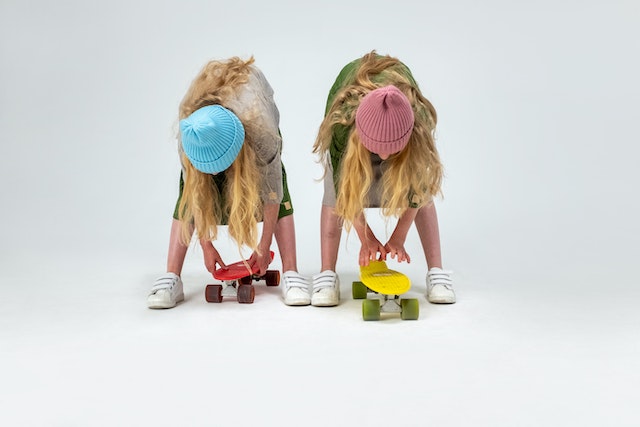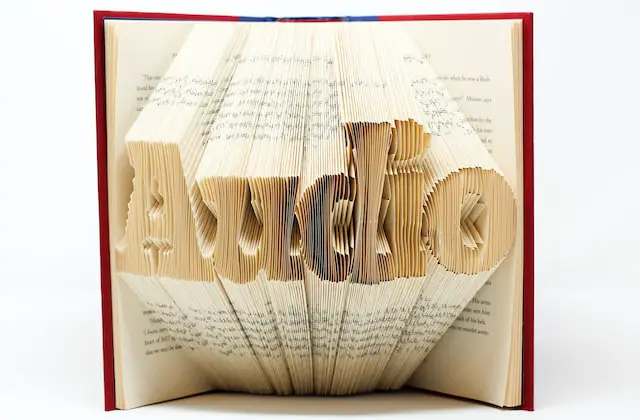
Plural Possessive Nouns: How to Use Them Correctly
Nouns are an essential part of speech that plays a crucial role in any language. They are used to name people, places, things, and ideas, and help create a clearer understanding of the world around us.
Possessive nouns, on the other hand, are nouns that show ownership or possession of a particular object.
In this blog post, we will focus on plural possessive nouns and explore how they are formed, when to use them, and some examples.
What is a Plural Possessive Noun?
A plural possessive noun is a noun that shows ownership or possession of more than one item.
This type of noun is used to indicate that the object being possessed or owned belongs to more than one person, group, or thing.
For instance, if you have two cars, you would say "the cars' engines" to indicate that the engines belong to both cars.
What is the Importance of Plural Possessive Nouns?
Using plural possessive nouns is essential in any language as it helps avoid confusion and misinterpretation.
In English, plural nouns are typically formed by adding an "s" to the end of the word, and this can sometimes lead to ambiguity. However, by adding an apostrophe after the "s," it becomes clear that the noun is plural and that it shows possession.
When to Use Plural Possessives?
Plural possessives are used in a variety of situations, including:
-
When two or more people or things share ownership or possession of an object. For instance, "the students' desks" or "the boys' toys."
-
When a group or team owns or possesses something. For instance, "the companies' employees" or "the bands' instruments."
-
When talking about family relationships, such as "my parents' house" or "my grandparents' farm."
How to Form a Plural Possessive Noun
To form a plural possessive noun, there are several rules to follow, depending on the type of noun.
Plural Nouns Ending in -s
For plural nouns that end in "s," add only an apostrophe after the "s" to form a possessive noun.
For example:
-
The dogs' toys were scattered all over the yard.
-
The girls' dresses were all different colors.
-
The bosses' meeting lasted for hours.
Note: Not all plural possessive nouns end in "s."
Irregular Plural Nouns
For irregular plural nouns that do not end in "s," add an apostrophe and an "s" after the word to form a possessive noun.
For example:
-
The children's toys were all over the room.
-
The men's shoes were lined up in the hallway.
-
The women's hats were all different styles.
Hyphenated and Compound Nouns
For hyphenated and compound nouns, add an apostrophe and an "s" to the last word of the plural phrase to form a possessive noun.
For example:
-
My sisters-in-law's cars are parked in the driveway.
-
The attorney generals' offices are located downtown.
-
Both editors-in-chief's departments had doubled in the past year.
Multiple Nouns with the Same Ownership
When multiple nouns share ownership or possession of an object, add an apostrophe and an "s" to the last noun in the phrase to form a possessive noun.
For example:
-
Jack and Jill's hill was steep.
-
Lucy and Mike's wedding was beautiful.
-
Tom and Jerry's cartoon was hilarious.
Multiple Nouns with Multiple Ownership
When multiple nouns have separate ownership or possession of an object, add an apostrophe and an "s" to each individual noun in the phrase to form a possessive noun.
For example:
-
The boys' and the girls' friends came over for dinner.
-
The cats' and dogs' toys were scattered around the house.
-
The schools' and the communities' resources were used to fund the project.
Common Plural Possessive Examples
Plural possessives are used frequently in written and spoken English. Here are some examples of plural possessives for various nouns.
| Noun | Possessive Form | Example Sentence |
|---|---|---|
| People | people's | The people's voices were heard. |
| Business | businesses' | The businesses' profits increased last quarter. |
| Parent | parents' | The parents' car was in the driveway. |
| Family | families' | The families' vacation photos were on display. |
| Man | men's | The men's shoes were lined up by the door. |
| Woman | women's | The women's coats were hanging in the closet. |
| Children | children's | The children's toys were scattered on the floor. |
| Student | students' | The students' grades were posted on the bulletin board. |
| Fox | foxes' | The foxes' den was hidden in the woods. |
| Boss | bosses' | The bosses' office was on the top floor. |
| Class | classes' | The classes' schedules were posted online. |
| Mouse | mice's | The mice's nests were found in the attic. |
| Moose | moose's | The moose's antlers were impressive. |
| Sheep | sheep's | The sheep's wool was soft to the touch. |
| Goose | geese's | The geese's migration patterns were studied. |
| Deer | deer's | The deer's tracks were seen in the snow. |
When is an Apostrophe Used in Plural Possessives?
When forming plural possessives, the apostrophe serves to indicate possession or ownership. For regular plural nouns, the apostrophe is placed after the "s".
For example, "The dogs' leashes were tangled" or "The classes' schedules were posted online".
On the other hand, irregular plural nouns require the apostrophe to be placed after the noun itself.
For instance, "The children's toys were scattered on the floor" or "The mice's nests were found in the attic".
Plural Possessive Nouns Quiz
- What is the correct plural possessive form of the word "cat"?
- Which sentence shows the correct use of a plural possessive?
- What is the correct plural possessive form of the word "sheep"?
- Which sentence shows the correct use of a singular possessive?
- What is the correct plural possessive form of the word "lady"?
- What is the correct plural possessive form of the word "person"?
- Which sentence shows the correct use of a plural possessive?
- What is the correct plural possessive form of the word "ox"?
- Which sentence shows the correct use of a singular possessive?
- What is the correct plural possessive form of the word "family"?
A) cats'
B) cat's
C) cats's
A) The child's toys were scattered across the room.
B) The children's toys were scattered across the room.
C) The childrens' toys were scattered across the room.
A) sheep's
B) sheeps'
C) sheep'
A) The neighbors' dog barked all night.
B) The neighbor's dog barked all night.
C) The neighbors dog barked all night.
A) ladies's
B) lady's
C) ladies'
A) childrens'
B) child's
C) children's
A) The bird's nest was perched high up in the tree.
B) The birds' nest was perched high up in the tree.
C) The birdss' nest was perched high up in the tree.
A) ox's
B) oxen'
C) oxens'
A) The nurses' station was busy all day.
B) The nurse's station was busy all day.
C) The nurses station was busy all day.
A) family's
B) families'
C) familie's
Answers
-
B) The children's toys were scattered across the room.
-
C) sheep's
-
B) The neighbors' dog barked all night.
-
C) ladies'
-
C) children's
-
B) The birds' nest was perched high up in the tree.
-
B) oxen's
-
B) The nurses' station was busy all day.
- C) families'
A) cats'
How to Avoid Using Plural Possessives
Using plural possessives can sometimes make a sentence awkward or confusing. One way to avoid using them is by rephrasing the sentence using prepositions such as "of" or "belonging to."
For example, instead of saying "the children's toys," you could say "the toys belonging to the children."
Similarly, instead of saying "the birds' nests were all in the same tree," you could say "the nests of the birds were all in the same tree."
Another example is instead of saying "the employees' opinions differed on the new policy," you could say "the opinions of the employees differed on the new policy."
By using prepositions to show ownership or possession, you can communicate your message more clearly and effectively.
Conclusion
In summary, a plural possessive noun is a grammatical construct that shows ownership or possession of an object by more than one person, group, or thing.
To form a plural possessive, you add an apostrophe and an "s" after regular plural nouns, add an apostrophe and "s" after irregular plural nouns, and add an apostrophe and "s" after the last word in hyphenated and compound nouns.
In cases where multiple nouns have the same or multiple ownership, the apostrophe is added to each individual noun.
To avoid using plural possessives, you can rephrase sentences using prepositions such as "of" or "belonging to."
By understanding the rules of plural possessive nouns and how to avoid using them when necessary, you can communicate effectively and clearly in written and spoken English.
What next? Check out our list of nouns and how to form their plurals.
